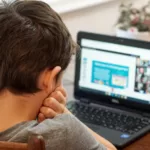The early childhood years are instrumental in molding our children’s characters, values, and interpersonal skills. As parents, caregivers, and educators, it’s our prerogative to utilize every opportunity that helps develop these attributes. Among the myriad of skill sets we hope to impart, teamwork is of paramount importance. Why? Because teamwork is more than just working well with others—it encompasses patience, communication, trust, and empathy.
This article presents a collection of team-building games tailored for kids aged 4-10. While there’s a vast range of activities available, our focus will be on those games that are not only fun but also effective in achieving the goal of fostering teamwork.
Understanding the Value of Teamwork
Before diving into the games, let’s briefly discuss why cultivating team-building skills during these formative years is vital:
- Enhanced Social Interactions: Collaborative activities help children understand the dynamics of social interactions, making them more tolerant and compassionate.
- Cognitive Development: Teamwork often requires problem-solving, thus challenging children to think critically.
- Emotional Growth: Achievements as a team can validate a child’s efforts, building their self-esteem.
- Conflict Resolution: Team games inevitably lead to disagreements. Learning how to navigate these situations prepares children for real-life challenges.
Games for Ages 4-6: Setting the Foundation
At this age, children are starting to engage more with their peers. The team-building games for this group are simple, fun, and designed to initiate the idea of collective achievement.
1. Pass the Parcel
Materials: A small gift wrapped in multiple layers, music.
How to Play: As music plays, kids pass the parcel around. When the music stops, the child holding the parcel unwraps one layer. The game continues until the gift is revealed.
2. Collaborative Mural:
Materials: A large sheet of paper, washable paints.
How to Play: Set the large sheet on a wall or floor. Allow children to collaboratively paint a mural. This is less about the end artwork and more about the process.
3. Balloon Pop:
Materials: Balloons, small chits of paper.
How to Play: Write fun tasks on paper chits and insert one into each balloon before inflating. Children pop balloons in teams and perform tasks together.
Games for Ages 7-8: Expanding the Horizon
Children at this age are more cognizant of group dynamics and can handle slightly more complex team-building tasks.
1. The Silent Tower:
Materials: Building blocks or Lego.
How to Play: Challenge kids to build the tallest tower they can without talking. They must rely on non-verbal cues and cooperation.
2. Trust Walk:
Materials: Blindfolds, a set of obstacles.
How to Play: Blindfold one child and guide them through an obstacle course with the help of verbal instructions from a teammate.
3. Group Storyboard:
Materials: Large paper, markers.
How to Play: One child starts drawing a part of a story. The next child continues the story through their drawing. This sequential art promotes shared creativity.
Games for Ages 9-10: Refining Team Dynamics
As children approach double digits, they’re ready for team-building challenges that stimulate critical thinking and strategy.
1. Marble Relay:
Materials: Marbles, spoons, cones.
How to Play: In teams, children must relay marbles using spoons, navigating a set path. The catch? They can’t drop the marble.
2. Puzzle Race:
Materials: Jigsaw puzzles.
How to Play: Divide kids into teams and give each a jigsaw puzzle. Whichever team completes it first, wins. This promotes strategy and collective problem-solving.
3. Scenario Solutions:
Materials: Cards with different scenarios.
How to Play: Present teams with challenging scenarios (e.g., stranded on a deserted island). They must come up with a solution together.
Tips for a Positive Team-Building Experience:
Adaptability: Modify games according to the group’s dynamics and individual needs.
Active Participation: Encourage all children to participate and voice their opinions.
Safe Environment: Ensure both the physical and emotional environment is safe. Kids should feel comfortable expressing themselves.
Debrief: After each game, discuss what went well and what the children learned about teamwork.
In Conclusion
Team-building games, when executed correctly, can be more than just a fun activity. They’re a classroom where children learn the nuances of collaboration, respect, understanding, and shared achievement. As parents, these games offer an invaluable tool to cultivate skills in our children that will serve them well throughout their lives.
It’s our responsibility to provide them with these opportunities and guide them through the intricate world of human interaction. Let’s make the most of these formative years, setting them up for success in the larger team called life.
Developing Team-Building Skills with CampusTop
Ignite your child’s passion for Scratch coding with CampusTop! Our Exclusive one-on-one online coding lessons for kids aged 4-10 provides kids with the opportunity to develop team-building skills that will benefit them for the ages. Sign up for a Free Trial Lesson and get started today!






